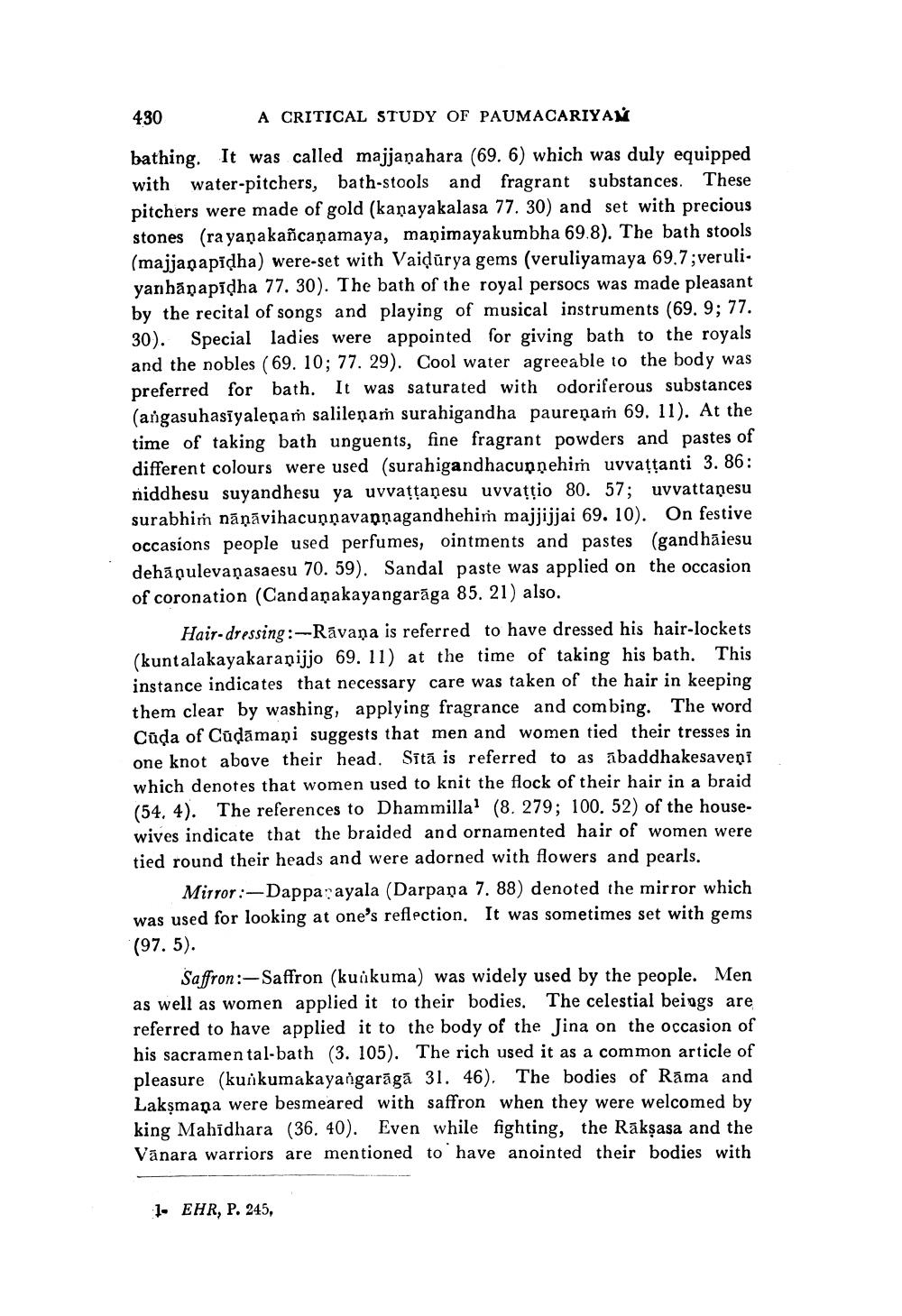________________
A CRITICAL STUDY OF PAUMACARIYAM
bathing. It was called majjaṇahara (69. 6) which was duly equipped with water-pitchers, bath-stools and fragrant substances. These pitchers were made of gold (kanayakalasa 77. 30) and set with precious stones (rayanakañcaṇamaya, maņimayakumbha 69.8). The bath stools (majjanapīḍha) were-set with Vaidurya gems (veruliyamaya 69.7;veruli. yanhanapiḍha 77. 30). The bath of the royal persocs was made pleasant by the recital of songs and playing of musical instruments (69. 9; 77. 30). Special ladies were appointed for giving bath to the royals and the nobles (69. 10; 77. 29). Cool water agreeable to the body was preferred for bath. It was saturated with odoriferous substances (angasuhasiyaleņam salileņam surahigandha paureņam 69. 11). At the time of taking bath unguents, fine fragrant powders and pastes of different colours were used (surahigandhacun nehim uvvaṭṭanti 3. 86: niddhesu suyandhesu ya uvvaṭṭanesu uvvatțio 80. 57; uvvattanesu surabhim nāṇāvihacunṇavanṇagandhehim majjijjai 69. 10). On festive occasions people used perfumes, ointments and pastes (gandhāiesu dehāpulevanasaesu 70. 59). Sandal paste was applied on the occasion of coronation (Candanakayangaraga 85. 21) also.
430
Hair-dressing:-Ravana is referred to have dressed his hair-lockets (kuntalakayakaraņijjo 69. 11) at the time of taking his bath. This instance indicates that necessary care was taken of the hair in keeping them clear by washing, applying fragrance and combing. The word Cuda of Cuḍāmaņi suggests that men and women tied their tresses in one knot above their head. Sītā is referred to as abaddhakesaveņi which denotes that women used to knit the flock of their hair in a braid. (54, 4). The references to Dhammilla1 (8. 279; 100. 52) of the housewives indicate that the braided and ornamented hair of women were tied round their heads and were adorned with flowers and pearls.
Mirror:-Dappar ayala (Darpana 7. 88) denoted the mirror which was used for looking at one's reflection. It was sometimes set with gems (97.5).
Saffron:-Saffron (kunkuma) was widely used by the people. Men as well as women applied it to their bodies. The celestial beings are referred to have applied it to the body of the Jina on the occasion of his sacramen tal-bath (3. 105). The rich used it as a common article of pleasure (kunkumakayangarāgā 31. 46). The bodies of Rāma and Laksmana were besmeared with saffron when they were welcomed by king Mahidhara (36. 40). Even while fighting, the Raksasa and the Vanara warriors are mentioned to have anointed their bodies with
1- EHR, P. 245,




